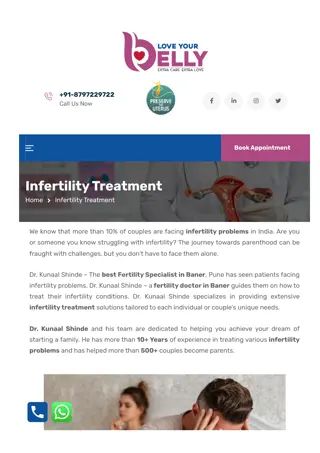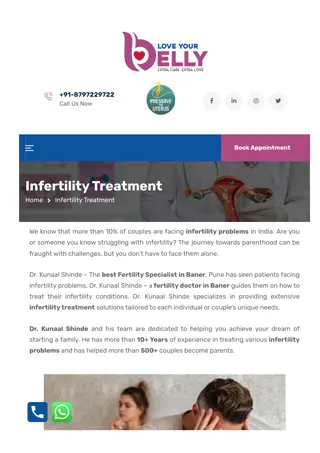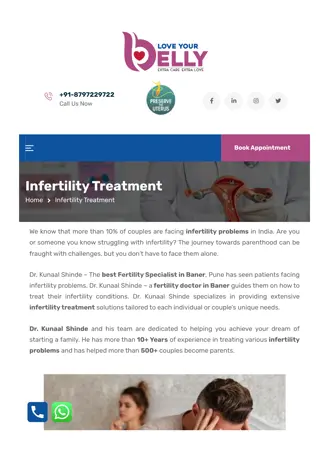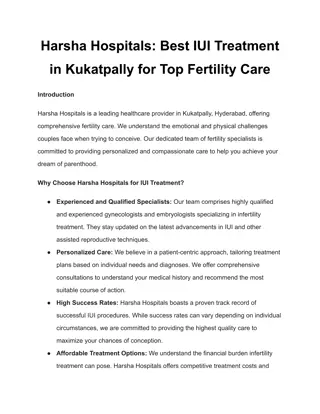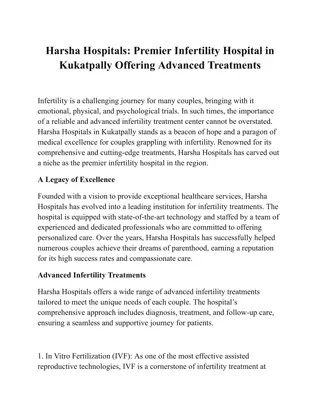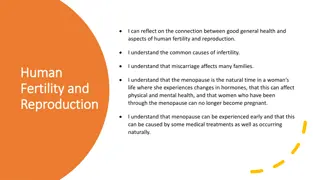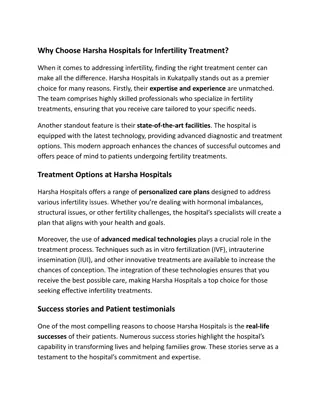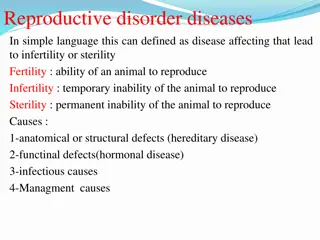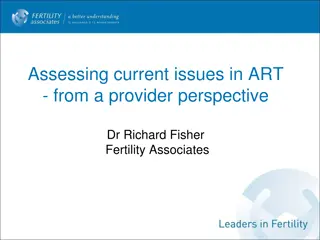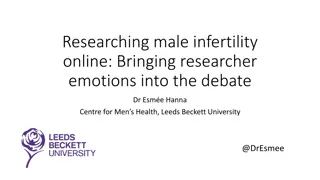Infertility: A Global Perspective
Involuntary childlessness is a significant issue affecting many couples worldwide. Infertility, whether primary or secondary, has social, emotional, and psychological impacts, particularly on women. Advances in technology offer interventions like IVF and IUI to help couples with conception challenges. This article sheds light on the prevalence of infertility, its implications, and the emergence of ART clinics in Tanzania to address the issue.
Download Presentation

Please find below an Image/Link to download the presentation.
The content on the website is provided AS IS for your information and personal use only. It may not be sold, licensed, or shared on other websites without obtaining consent from the author.If you encounter any issues during the download, it is possible that the publisher has removed the file from their server.
You are allowed to download the files provided on this website for personal or commercial use, subject to the condition that they are used lawfully. All files are the property of their respective owners.
The content on the website is provided AS IS for your information and personal use only. It may not be sold, licensed, or shared on other websites without obtaining consent from the author.
E N D
Presentation Transcript
MATILDA MICHAEL NGARINA (MD, Mmed, PhD) HEAD ART UNIT MNH PRESIDENT AGOTA
Is the inability of a couple to conceive after 12 months of regular unprotected sexual intercourse in a women below 35 years; and after six months of regular unprotected sexual intercourse in a women above 35 years can either be primary or secondary infertility*
Infertility affects approximately 10-15% of the reproductive age couple/48.5m couples worldwide 19.2 million have primary infertility Almost 29.3% of women with a previous live birth were unable to have an additional live birth (secondary infertility) In sub-Saharan countries, the national average for prevalence ranged from 12.5% to 16%. Prevalence in Tanzania is estimated 11%-17%
Involuntary childlessness is one of the most common, painful and socially isolating illnesses people. painful and socially isolating illnesses suffered by young Having children is one of the most important forces for family and social cohesion forces for family and social cohesion throughout all societies. Childlessness has been a burden particularly for women burden to couples, and perhaps women, throughout history. Infertility has significant negative social impacts on the lives of infertile couples and particularly women, who frequently experience violence, divorce, social stigma, emotional stress, depression, anxiety and low self violence, divorce, social stigma, emotional stress, depression, anxiety and low self- -esteem. esteem.
With advances in technology there are now interventions that enable in-vitro handling of both human oocyte and sperm or of the embryo for the purpose of reproduction. It includes but is not limited to Artificial insemination (IUI) Invitro fertilization (IVF) Intracytoplasmic sperm injection (ICSI) Preimplantation genetic testing (PIGT) Gamet intrafallopian transfer (GIFT) Zygot intrafallopian transfer (ZIFT) (IUI). (IVF) and embryo transfer. (ICSI) (PIGT) (GIFT) (ZIFT)
ART clinics are coming up 6 now, 3 in Dar Community is becoming more aware of availability of the services in the country The service will soon be made available in public hospitals (MNH and KCMC) MOH is supporting both private and public hospitals and now putting regulations for efficient provision of ART services
ART unit has already been established The ART lab is almost complete Training of staff is on going Purchase of IVF equipment on going Procurement of consumables yet to follow
Quality ART clinic, capture all cycles that would otherwise travel abroad Ease the procurement of medical supplies and equipment for IVF Spread of such services to all regions Better prices affordable to the majority of the needy Proper guidelines and policies governing ART Training and Research in the country..
Government policies could mitigate the many inequities in access to safe and effective fertility care. To effectively address infertility, health infertility is a disease that can often be prevented, thereby mitigating the need for costly and poorly accessible treatments. policies need to recognize that
Incorporating fertility awareness in national comprehensive sexuality education programmes, promoting healthy lifestyles to reduce behavioral risks, including prevention, diagnosis and early treatment of STIs, preventing complications of unsafe abortion, postpartum sepsis and abdominal/pelvic surgery, and addressing environmental toxins associated with infertility, are policy and programmatic interventions that all governments can implement.
In addition, enabling laws and policies that regulate third party reproduction and ART are essential to ensure universal access without discrimination and to protect and promote the human rights of all parties involved. Once fertility policies are in place, it is essential to ensure that their implementation is monitored, and the quality of services is continually improved.
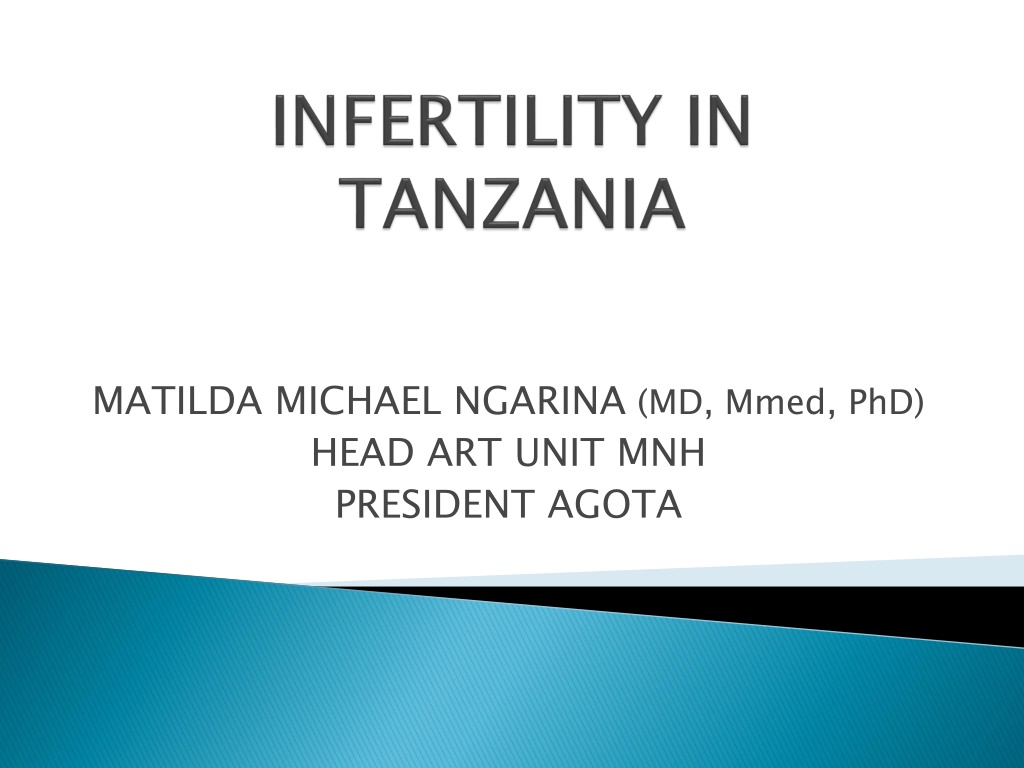
 undefined
undefined












